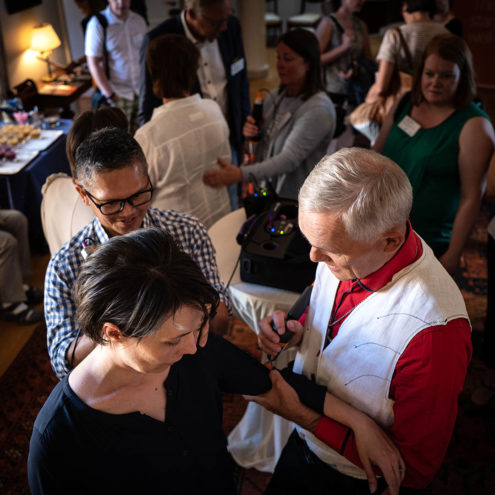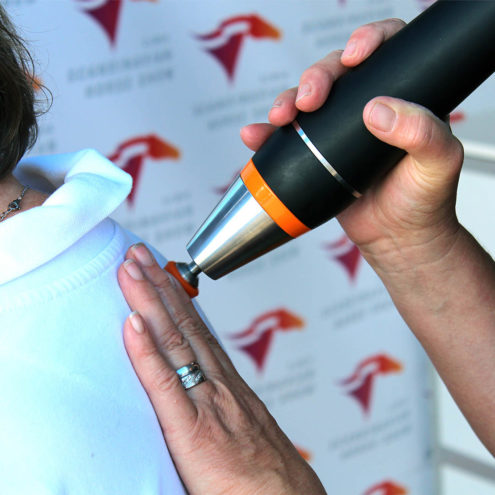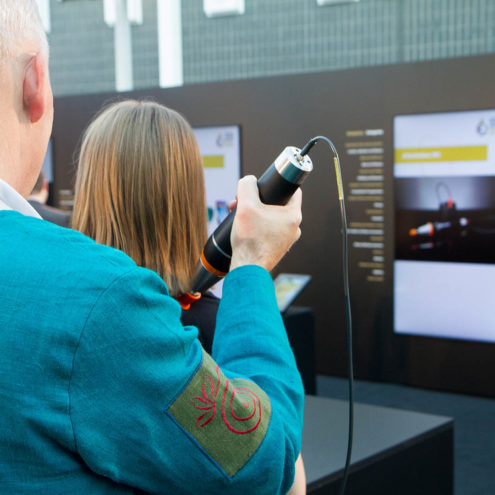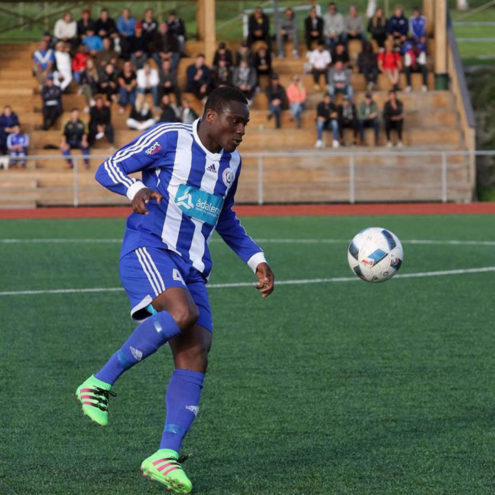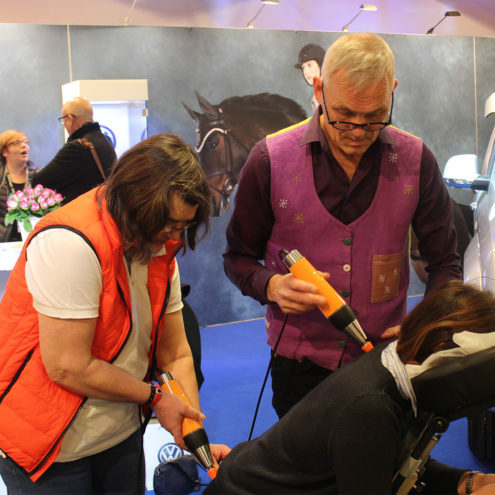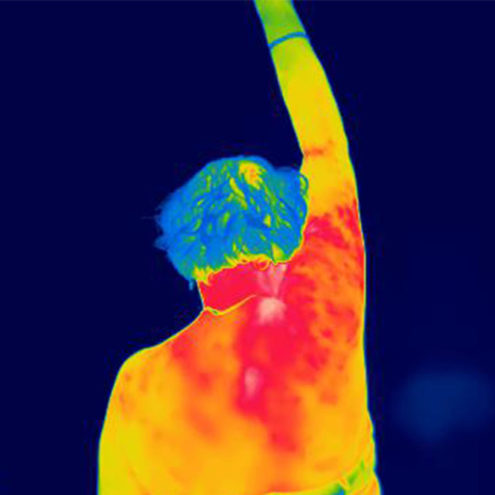Tractus Iliotibialis: Anatomy and Function

The iliotibial tract, also known as the iliotibial band (ITB) or IT band, is a very important structure in our body. The ITB is very important for the stabilization of the knee and hip joints. In this article, we provide a detailed overview of the iliotibial tract, its anatomy, functions, common problems and effective treatment methods.
What is the iliotibial tract?
Description of the Iliotibial Tract, also known as the iliotibial band, and its role in stabilizing the knee and hip joints
The iliotibial tract is a thick, fibrous longitudinal tissue structure that extends along the outside of the thigh from the hip to the lower leg. It is a reinforcement of the fascia lata, a broad connective tissue sheath that surrounds the thigh muscles. The iliotibial band plays an important role in stabilizing both the knee and hip joints during various movements, such as walking, running and jumping.
The location of the iliotibial tract along the outside of the thigh and its attachment to the hip bone and lower leg
The iliotibial tract extends from the iliac crest of the pelvis, where it attaches to the tensor fasciae latae muscle and the gluteus maximus muscle. It continues along the outside of the thigh and attaches to the lateral condyle of the tibia. The band acts as a great support for stabilizing the bones and joints, especially during activities involving movement and load.
Features of the Iliotibial Tract
Helping to stabilize the knee and hip joints during different movements such as walking, running and jumping
The iliotibial band plays a central role in stabilizing the knee and hip joint. During walking, running and jumping, it acts as a dynamic support, helping to keep the knee in alignment and prevent excessive movement. By working together with the muscles of the hip and thigh, the iliotibial band ensures that the joint functions properly and effectively.
Prevent excessive lateral movement of the knee and hip joints
One of the most important functions of the iliotibial tract is to prevent excessive lateral movement of the knee and hip joints. This is particularly important during activities involving lateral displacement and rotational movements. By limiting these movements, the iliotibial band helps to reduce the risk of injury and overloading of the joints.
Common problems with the iliotibial tract
Inflammation of the Iliotibial Tract, known as iliotibial band syndrome, common in athletes and runners
One of the most common problems related to the iliotibial tract is inflammation, known as iliotibial band syndrome (ITBS). This condition occurs when the iliotibial band becomes inflamed and irritated due to repeated friction against the lateral condyle of the femur (thigh bone). ITBS is particularly common in runners, cyclists and other athletes who perform repetitive movements.
Symptoms of ITBS include pain on the outside of the knee, especially with activity, and may also include swelling and tenderness in the area. The pain is often worse when running or walking up and down hills or stairs.
Overuse injuries or overexertion of the iliotibial tract due to repeated movements or incorrect biomechanics
Overuse injuries or overstretching of the iliotibial band can also occur due to repetitive movements or improper biomechanics. Poor running technique, inappropriate footwear, weak hip and glutes, or irregular terrain can all contribute to overuse and injury of the iliotibial band.
The symptoms of overexertion can be similar to those of ITBS and include pain, stiffness and limited mobility in the area.
Neck collar: A soft or hard neck collar can be used to stabilize the neck and restrict movement, which can reduce pain and help restore the correct position.
Orthoses : Orthoses are: Custom-made orthoses can be used to support the neck and improve posture.
Other aids: If necessary, other aids, such as pillows to support the neck during sleep or ergonomic workstations, may be recommended.
Treatment of Tractus Iliotibialis-Related Problems
Rest and avoidance of activities that may irritate the iliotibial band
The first step in treating ITBS and overuse is to rest and avoid activities that may further irritate the iliotibial band. This means reducing or avoiding running, cycling and other activities that cause pain. Rest gives the body time to heal and reduce inflammation.
Stretching and strengthening exercises to improve flexibility and strength of the Tractus Iliotibialis and surrounding muscles
Stretching and strengthening exercises are important to improve the flexibility and strength of the iliotibial band and the surrounding muscles. Some effective exercises include:
ITB stretch: Stand with the affected leg crossed behind the other leg. Bend sideways towards the affected side and hold the stretch for at least 30 seconds. Repeat several times a day.
Hip strength: Exercises such as the side plank, hip lift and the ‘clam’ exercise, help to strengthen the hip muscles and improve stability.
Foam roller: Using a foam roller along the outside of the thigh can help reduce tension and improve flexibility in the iliotibial band.
Use of foam rollers or massage to relieve tension and increase blood circulation in the area
Foam rolling and massage are effective techniques for relieving tension and increasing blood circulation in the iliotibial band area. Rolling a foam roller up and down the outside of the thigh can reduce muscle tension and improve tissue mobility. Massage can also help break up scar tissue and improve the healing process.
To use a foam roller, lie on your side with your affected leg on the roller and roll slowly from your hip down to your knee. The focus should be on areas that feel particularly sore or tense.
How can we help you with your iliotibial tract problem?
At FasciaClinics, we take a holistic approach to treating the knee joint. Our team of therapists use fascia therapy, a type of wellness treatment to relieve tension and pain in the body. The fascia is the network of connective tissue that binds and permeates everything in our body. All cells, tissues (even bone), muscles and organs contain fascia.
Fascia treatment focuses on releasing tension and adhesions in the fascia and increasing its flow. By reducing pressure and increasing circulation, cell membranes can more easily absorb nutrients and release waste products. In this way, fascia treatment can promote the body’s own healing. The treatment is pleasantly relaxing and painless. It gets the whole body flowing and helps you balance your posture so that the body is evenly loaded.
During a visit, we analyze the whole body to see where compensations and imbalances are and how they have spread. If there is an imbalance in the body, there is a risk that it will spread and affect other structures such as muscles and joints. That’s why it’s very important to seek help quickly as soon as you notice any symptoms.
Fascial treatment for iliotibial band pain involves balancing the body to make the load on the knees more even. A more even load will reduce the wear and tear on the muscles of the legs and other structures, allowing them to keep the knees in a good position where the iliotibial band is not irritated. In the meantime, it is very important to follow your doctor’s recommendations while you are undergoing fasciitis treatment in order to return to your activities as soon as possible.
For more information about our services and how we can help you with iliotibial tract problems, visit our Fascia Clinics website. Here you will also find resources and articles on musculoskeletal conditions and other related topics that may be helpful to you.
In summary, the iliotibial tract is an important structure for the stabilization of the knee and hip joints. Problems with the iliotibial band, such as inflammation and overuse, can cause significant pain and disability. By understanding the causes, symptoms and treatment methods, you can effectively manage and alleviate these problems. At Fascia Clinics, we are here to support you every step of the way towards recovery and an active life without pain.
 Search
Search











